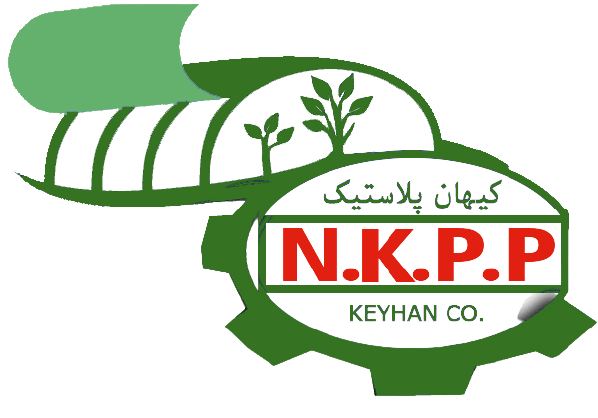A modern greenhouse requires a covering that reliably stabilizes environmental conditions. Greenhouse film plays a key role in this process—not just as a simple cover, but as an intelligent layer that, through light filtration, humidity control, and thermal protection, creates an ideal living environment for plants. Fully understanding the different types of films and their features is an important step for farmers and gardeners to make effective and economical decisions. In this article, we aim to provide key insights to help you make better choices when purchasing greenhouse nylon.
Benefits of Using Greenhouse Film
Light Control and UV Filtration
High-quality greenhouse films absorb harmful rays while allowing only balanced, beneficial light to reach plants. For example, cucumbers can burn under direct summer sunlight, but UV-protected films significantly reduce this risk and increase crop yield.
Temperature Stabilization and Preventing Extreme Fluctuations
At cold nights, the film acts as a thermal insulator, preventing sudden drops in temperature. This is particularly crucial for sensitive greenhouses and regions with large day-night temperature differences. Advanced multilayer films further reduce thermal exchange, maintaining a stable internal environment.
Moisture Retention and Improved Irrigation
By limiting water evaporation, greenhouse soil stays consistently moist. This reduces the need for frequent irrigation and lowers energy consumption for pumps, leading to significant long-term savings.
Quick Installation and Cost-Effectiveness
Compared to options like glass, polycarbonate, or fiberglass, films are lighter, cheaper, and require fewer tools for installation. Even a simple setup can provide adequate coverage, making it ideal for small farms and home greenhouses.
For a more detailed discussion of greenhouse film benefits, visit our dedicated article on this topic.
Importance of Wide Greenhouse Film Rolls
Seamless Coverage
Films wider than 12 meters are produced in single rolls, providing broad coverage without multiple seams. This prevents wind and water intrusion and reduces tear risks. Keyhan Plastic produces films ranging from 3 to 18 meters wide, suitable for greenhouses of all sizes. Wide films are highly valued in the industry.
Lower Installation and Labor Costs
With wide rolls, a single roll can cover a greenhouse, while narrower films require two or three rolls and more labor.
Enhanced Weather Resistance
Every seam is a potential weak point. Eliminating seams increases resistance to wind, hail, and heavy rain.
Weight, Thickness, and Technical Features of Greenhouse Film
Roll Weight
Rolls typically weigh between 70 and 230 kg depending on width and thickness. For example, a 10-meter-wide, 200-micron film may weigh 150 kg. Weight affects transportation, installation, and structural stability.
Thickness and Its Benefits
150–180 microns: suitable for home or small greenhouses
200–220 microns: suitable for semi-industrial to industrial greenhouses
300+ microns or polycarbonate: heavy-duty for harsh climates
Greater thickness and width increase durability but also weight and cost.
Transparency and Light Quality
Besides light quantity, light quality matters. The film should distribute light evenly; any cracks or stains create shadows, resulting in uneven plant growth.
Key Additives for Greenhouse Films
- UV Stabilizer: prolongs lifespan under sunlight
- IR (Infrared): enhances thermal insulation at night
- Anti-Fog & Anti-Drip: prevents water droplets on plants
- EVA: improves flexibility and tear resistance
Types of Greenhouse Films
| Material | Common Thickness | Lifespan | Advantages | Disadvantages |
|---|---|---|---|---|
| Polyethylene (PE) | 150–200 microns | 2–4 years | Affordable, lightweight, easy to install | Less durable than PVC or polycarbonate |
| PVC / Copolymer | 200–250 microns | 3–5 years | Flexible, more durable than PE, better light filtering | Higher price, heavier |
| Polycarbonate (PC) | 3–6 mm | 6–10 years | Highly durable, long-lasting, excellent insulation | Expensive, requires stronger frame |
Lifespan Overview:
Standard PE: ~2 years
UV-stabilized PE: 3–5 years
PVC/Copolymer: up to 5 years
Polycarbonate: 6–10 years under harsh conditions
Proper installation with Vigel wires and correct tension can significantly extend film life.
Features and Uses of Greenhouse Green Film
Characteristics
Green greenhouse films filter some blue and green light, preventing leaf burn and moderating harsh sunlight. They are ideal for:
Hot, dry areas or intense sunlight
Light-sensitive crops (e.g., ornamental flowers)
Improving visual aesthetics and soft lighting inside the greenhouse
They typically include UV, IR, and Anti-Fog additives.
Applications by Climate
Hot, dry regions: UV-stabilized PE 180–200 microns with IR protection
Moderate climates: standard PE 150–180 microns
Industrial or fully equipped greenhouses: polycarbonate or PVC/Copolymer
High sunlight regions: green films or higher UV-filtered films
Proper Installation and Maintenance
Common Tools:
Vigel wire: secures film into aluminum or galvanized channels
Clips or fasteners: temporary or spot attachments
Screws: for connecting frame parts
Following these principles can extend film life by 30–40%.
Calculating Film Requirements
Approximate coverage: 1 kg of film ≈ 5 m².
Example: a 4000 m² greenhouse needs 800 kg of film (~16 rolls of 50 kg each).
Factors Affecting the Price of Greenhouse Plastic
Thickness and material quality
Roll width
Additives and UV resistance
Brand and after-sales service
Market fluctuations (currency, raw materials)
Buying Advice
Consult experts to choose the right film based on crop, quantity, and installation conditions.
Conclusion
Choosing the right greenhouse film means selecting everything your plants need for optimal growth and protection:
- Suitable material (PE, PVC, PC)
- Appropriate thickness
- Wide rolls for seamless coverage
- Specialized additives
- Proper installation
If you’re unsure, a free consultation with Keyhan Plastic experts is recommended. For a full range of products, visit the Keyhan Plastic homepage. If you want, I can also make a more concise, SEO-friendly version for web publication, keeping all key terms like “greenhouse film,” “proper greenhouse light,” and “greenhouse UV protection” naturally included.

